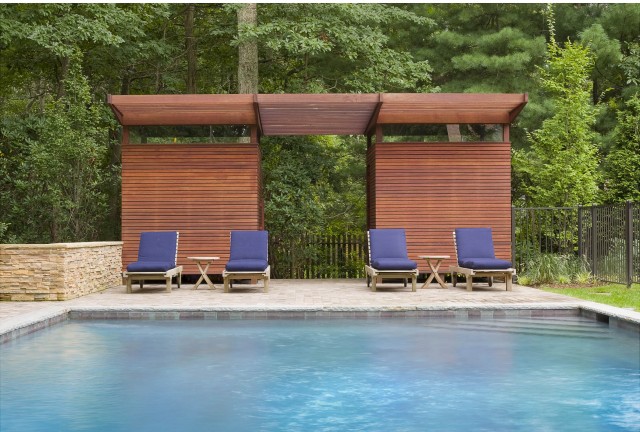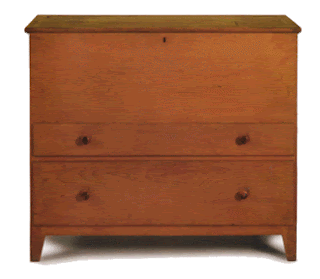Rhythm in design means that there is a repeating of a certain theme or motif in a design.1
And just like in music, rhythm often evokes emotions. When a visual experience actually stimulates one of our other sense, the effect is called kinesthetic empathy.1
Lauer, David A. "Chapter 6, Engaging the Senses." Design Basics. 7th ed. New York: Holt, Rinehart, and Winston, 1979. 114-22. Print.
Like in this picture... this design evokes emotions. Relaxation, calmness, peace. This is an example of kinesthetic empathy. Joanna, "Handcrafted Rhythm in a Tropical Retreat." Interior Design Daily. March 30, 2011. April 29, 2012
Alternating Rhythm consists of successive patterns in which the same elements reappear in a regular order. Motifs alternate consistently with one another to produce a regular (and anticipated) sequence. The predictability of the pattern is necessary The repetition must be fairly obvious or the whole idea of visual rhythm becomes obsure.1
 The pictures on the wall of this picture show Alternating Rhythm. Each picture is the same framing and theme, but different colors change the look a bit. But the pattern is predictable enough to anticipate the rhythm of the design.
The pictures on the wall of this picture show Alternating Rhythm. Each picture is the same framing and theme, but different colors change the look a bit. But the pattern is predictable enough to anticipate the rhythm of the design.A designer's world: Interior Design, "
A Little Inspiration For The Designer In All Of Us", April 29, 2012
Progressive Rhythm is the repetition of a shape that changes in a regular manner. A feeling of a sequential pattern. Most often achieved with a progressive variation of the size of a shape, through it's color, value, or texture could be the varying element.

A designer's world: Interior Design, "
A Little Inspiration For The Designer In All Of Us", April 29, 2012
Polyrhythmic Structures are complex patterns employing more than one rhythm or beat. For Example:
Notice the different angles and circles, the different colors... yet the circle in the cube match the wallpaper, the variety of the rock art matches the wallpaper, the structure of the chair matches the wallpaper. The "poly" is the different shapes and colors, the "rhythmic" is the repeating patterns.
As an interior designer, rhythm will be very important. You want your client to be able to feel emotion when in their home or business. I believe that I will be using polyrhythmic structures the most in design. Different shapes, patterns, colors dictate polyrhythmic structures and are constant in interior design.





 Asymmetrical balance is achieved by different types of items with similiar visual weight or attraction to the eye being used horizontally or vertically to create picture. In the picture to the left, the strong room dividing wall is balanced by oversized light fixtures and table on the opposite side of the room.
Asymmetrical balance is achieved by different types of items with similiar visual weight or attraction to the eye being used horizontally or vertically to create picture. In the picture to the left, the strong room dividing wall is balanced by oversized light fixtures and table on the opposite side of the room.
















